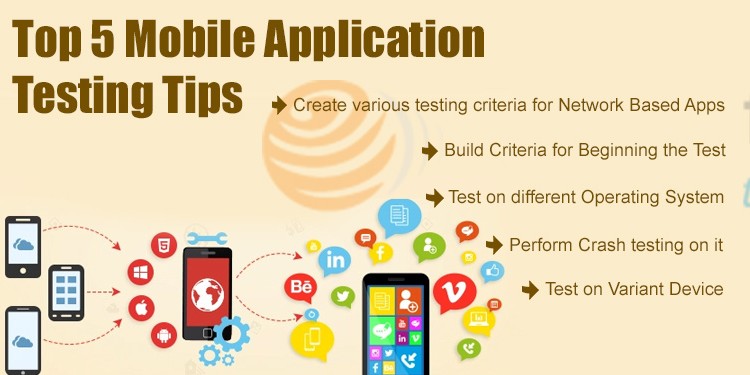With the world moving from desktop to mobile device, the number of mobile applications being developed is increasing day to day. With the increasing count of mobile applications in the App Store (be it Google Play Store or Apple iTunes Store) the prior thing that needs to be done is mobile application testing. Mobile application development always requires a testing phase which is required to be performed before giving the green signal for using the app. But what points are to be remembered while running a mobile app testing. Following are the points that need to be overlooked before confirming any app for the mobile users.
Build Criteria for Beginning the Test: Before initializing the testing phase for any mobile application, ensure that it is ready to enter the testing phase. The reason behind is that in many cases, the app remains in development phase and the testing team starts testing it, resulting in countless bugs that needed to be resolved. The testing team is not bothered about the current status of the mobile app development team. If the application is just a piece of code till yet, it’s better to keep it under coding phase instead of executing different test on it.
Test on Variant Device: In case when the app is ready to be tested, it’s not that the team tested it on a single device and develops the case study based on that individual test. Instead, the mobile application testing must be carried out on copious devices with different traits. For eg, testing the device on an emulator, testing it on a rooted device, devices with distinct display and more. This will allow you to search out error that erupted in some situations, but runs flawlessly in others. With the blend of numerous tests, you will be able to sum up your testing report on a brad score.
Test on different Operating System: When you are running the mobile application on variant device, it’s equally important to test the app on different OS. This is highly beneficial in case the app development team made it compatible for numerous OS. E.g., in Android, the app is compatible to run on the Android version above 2.3 (Gingerbread). So, here the testing team must ensure that it is not having a single flaw, while running on different OS versions.
Create various testing criteria for Network Based Apps: If the application, hence developed is a network based app, then it must be tested on different scenarios. It must be tested on Wi-Fi and cellular data to test its masterly behavior. You can also run the test on without any internet to look at its possible outcomes.
Perform Crash testing on it: There might be the case when your phone gets crashed due to any reason. How your app will respond in those scenarios, also matters a lot. So, it’s always preferable to test the mobile app in different crash cases like when the battery is removed suddenly, when the mobile is having low battery, when bulk data is added at once.
Running the application in different cases will not only enhance the scope of the application, but will also allow it to get the exemplary product. The amalgamation of different case studies will enable the mobile app developers to create a zero bug application. So, follow the above mentioned formats and offer the ideal app to your customer.
















